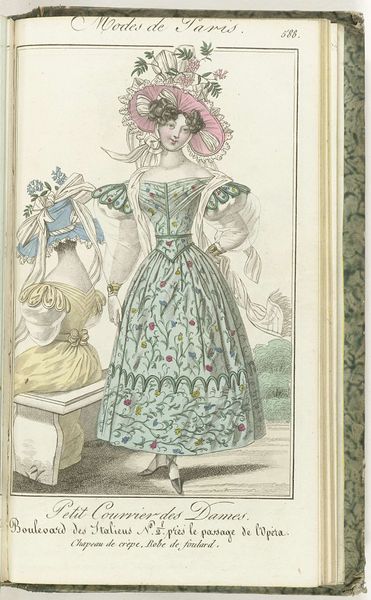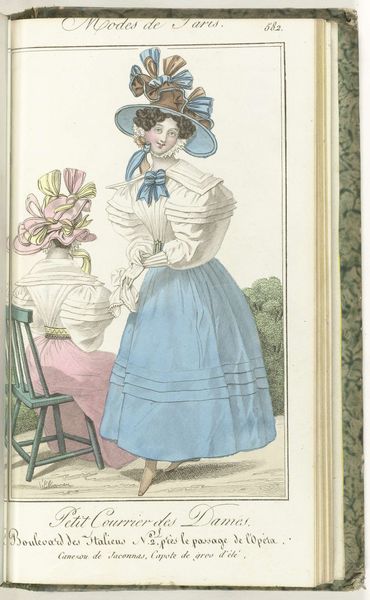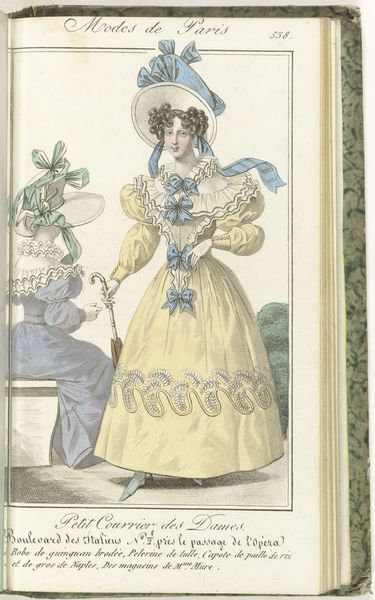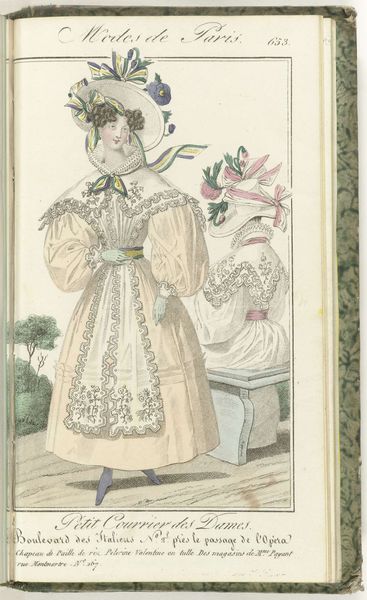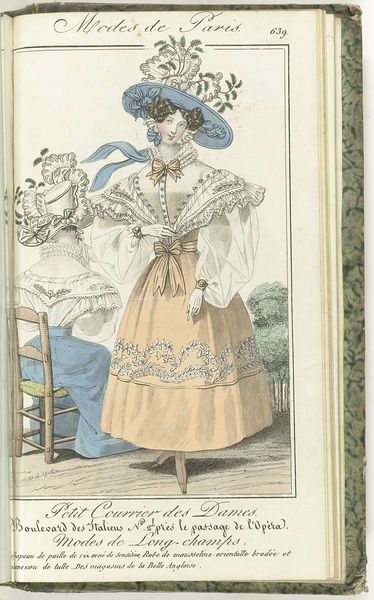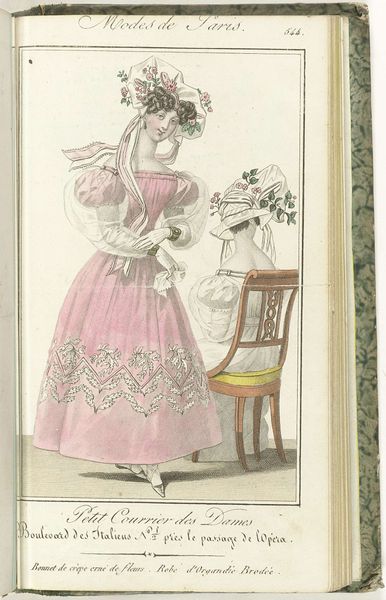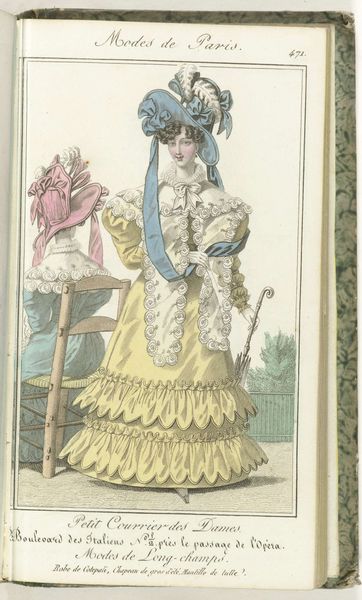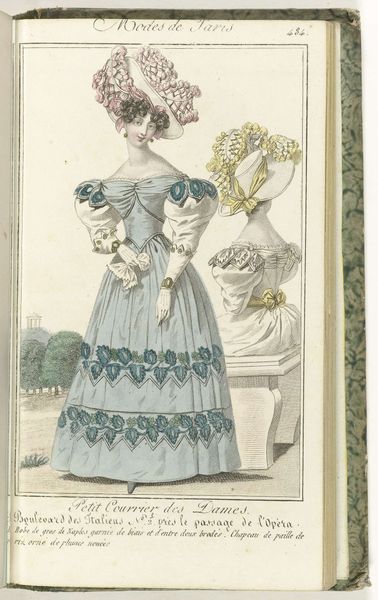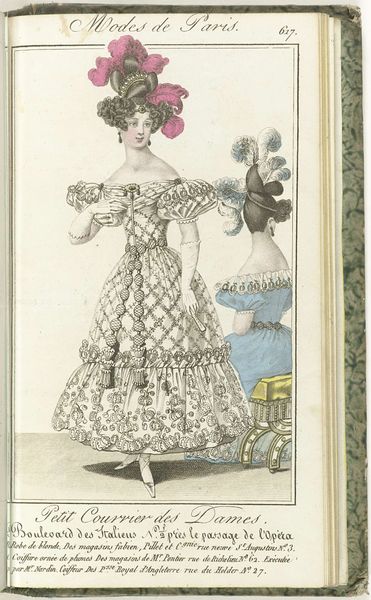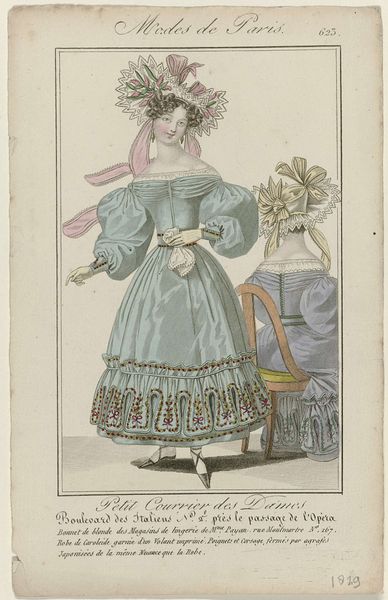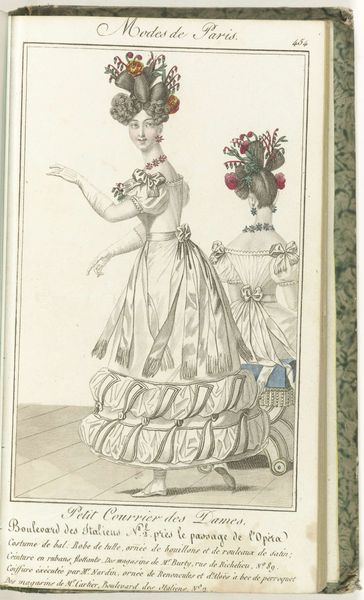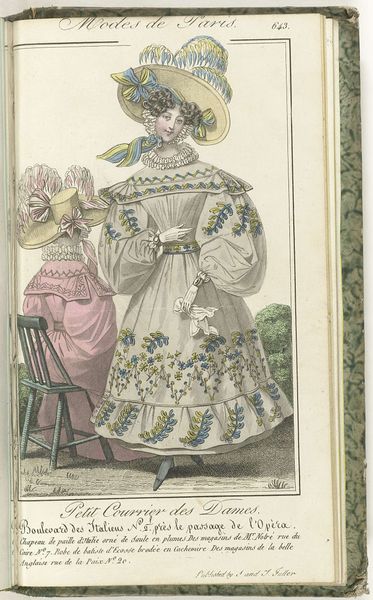
Petit Courrier des Dames, 25 juillet 1829, No. 654 : Chapeau de gros de Naples... 1829
anonymous
Rijksmuseum
watercolor
watercolor
romanticism
watercolour illustration
genre-painting
dress
Dimensions: height 201 mm, width 113 mm
Copyright: Rijks Museum: Open Domain
Curator: Take a look at "Petit Courrier des Dames, 25 juillet 1829, No. 654 : Chapeau de gros de Naples..." It comes to us from 1829, a watercolor illustration from an anonymous artist. Editor: It has a lightness to it. The pastels create an airy quality that speaks to the fashions on display but it is quite stylized for fashion, it looks somewhat posed. Curator: Right, it's fascinating how the materials contribute to this stylized representation of fashion and society at the time. The description details 'Chapeau de gros de Naples,' indicating the specific silk used, along with rice tulle— highlighting material value, production, and trade networks involved in creating fashionable textiles for bourgeois women. Editor: That emphasis on "ladies," or 'dames', frames the piece within a certain social class, one with access to materials like those you mentioned, alongside leisure time to engage in such sartorial pursuits. It serves as both reflection and reinforcement of the period’s power structures, doesn’t it? The placement of this in Petit Courrier, an actual fashion magazine solidifies its context and audience. Curator: Absolutely, and consider the role of "M. Charmotte rue de la Paix 9," whose store is credited in the print. This wasn’t just art; it was a commodity, a method of driving desire and defining aspiration through accessible media. The labor of manufacture, the textile sourcing from different locales, and then the marketing efforts themselves were linked materially, socially, and economically. Editor: Precisely. And in seeing the artwork now, removed from its original context, it makes you consider our own engagement with fashion imagery and consumerism— and question whether this "genre painting" still shapes perceptions, ideals, and the hierarchies related to access and privilege that underpinned that era. The illustration doesn't only portray the clothing itself but encodes a complex interplay of class aspirations. Curator: Looking closer at how these material choices and productive forces create desire reminds us of art’s role as a tool for influencing our behaviors, a concept still deeply relevant in our modern era. Editor: Right, analyzing through its historical and social roots helps unearth these complexities, even in what seems at first blush a pretty depiction of dresses!
Comments
No comments
Be the first to comment and join the conversation on the ultimate creative platform.
